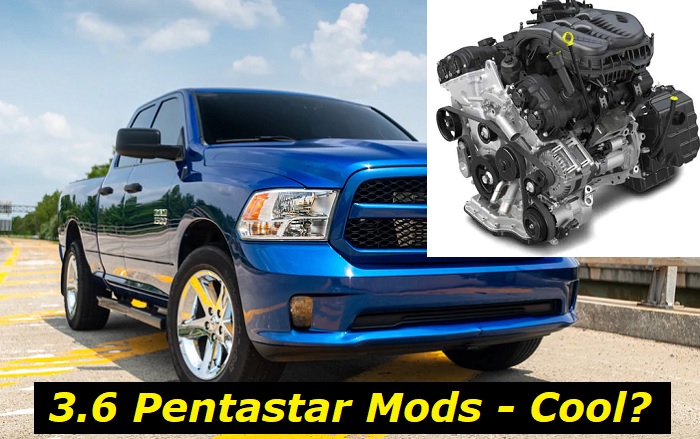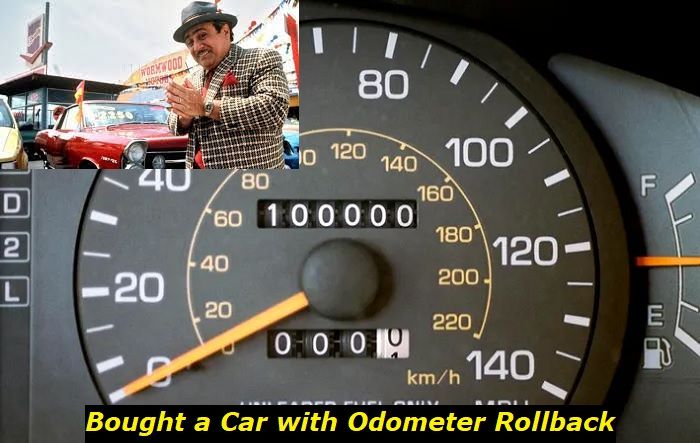The Pentastar is a 3.6L 6-cylinder engine first introduced at the New York Auto Show in 2009. It was, and arguably still is, one of the most technologically advanced engines manufactured by Chrysler. It was first implemented in the 2011 model year Chryslers, Dodge and Jeeps, and it's constantly rated among the best engines in the US market.
Key features and my opinion about the engine
- Production years:2011-now
- Average lifespan of Pentastar V6:220,000-260,000 miles
- Fuel supply type:port injection
- Power range:287-309 hp
- Fuel efficiency:bad
- Engine block material:aluminum
- Engine reliability score:high
- The most common problems:minor issues with cylinder heads, rocker arm failure, weak cooling system, problems with the oil pump.

What Makes the Pentastar Powerful in the First Place?
The 3.6L V6 Pentastar is lighter, more powerful, and consumes less fuel than its predecessor. It's also more compact - 94mm shorter than its successor, and 34mm shorter than its predecessor. It features a high-pressure die-cast aluminum cylinder block with a 60° V-angle between its cylinder banks.
Furthermore, it features an open-deck design, which reduces the amount of material used in its build, making it cheaper to produce and lighter in weight. To increase its longevity, it's fitted with cast iron cylinder liners.
The engine block of the 3.6L Pentastar is fitted with three-piston oil cooler jets. Each of these oil cooler jets is responsible for cooling two pistons and managing the heat to prevent detonations. Moreover, it's fitted with cast aluminum pistons that feature low-friction rings, forged steel connecting rods, a reduced skirt area, and a nodular iron crankshaft.
The engine takes advantage of a vane-type, chain-driven variable displacement oil pump, and there aren't any brackets for any of the engine's accessories. The belt tensioner, air conditioner compressor, and alternator are all bolted directly to the engine block and are driven by a serpentine belt. As a result, the engine produces low levels of noise and vibration.
The cylinder heads are sand-cast and made of heat-treated T7 aluminum. Moreover, it features 4 valves per cylinder and dual overhead camshafts. The exhaust and intake camshafts feature separate timing for each head and are chain-driven. The timing chains feature what's known as a silent chain link design, and all camshafts feature torque-actuated phasers.
On top of all this, the Pentastar 3.6L comes with a single-piece intake vale made of forged heat-resistant martensitic and is 38mm in diameter. The exhaust valves, on the other hand, come in a two-piece design and a forged austenitic head that's welded to a martensitic stem with a diameter of 30mm.
Last but not least, the cylinder heads come with high-flow exhaust and intake ports plus an integrated manifold. On top of the engine itself, there's an intake manifold made of lightweight composite that's fitted with an electronically-controlled fuel injection system and 74mm throttle body.
Power Overwhelming: How to Increase the Pentastar's Power Output?
So you're a gearhead who wants to squeeze out extra juice out of their Pentastar. There are many ways to do that, and it's up to you to decide which way to go. However, keep in mind that you can't, and shouldn't go overboard, as that can quickly lead to head and cooling failures. Most reputable performance and tuning shops that sell modification parts don't recommend going over 12lbs, as that can decrease reliability. That being said, after conducting our fair bit of research, we've come to the conclusion that the best order to get the upgrades done is the following:
Cold Air Intake
A cold air intake, also known as CAI, is an assembly of parts whose goal is to provide your engine with cool air. They do so by moving the air filter outside of the engine compartment, allowing for cooler air to get into the engine. In case you didn't know, cool air is richer in oxygen, which is needed for the combustion process. Factory air intake systems feature a cold that clogs up the head, restricting the „breathing" of the engine, and a cold air intake fixes this problem.
Simply put, when compared to hot air, cold air enables the engine to burn fuel more efficiently, thanks to the increased amount of oxygen. The amount of extra power you'd get out of your Pentastar by adding a cold air intake will depend on the vehicle's specs, but generally, you can expect to get anywhere from 5-12HP.
Aftermarket Exhaust System
It doesn't matter how powerful the engine is if the exhaust system isn't made of quality materials, its pipes aren't wide enough, and it doesn't feature mandrel bent pipes. And in most cases, car manufacturers cut corners left and right in order to keep the price of their vehicles competitive and affordable to the everyday Joe. But we aren't everyday Joes, are we?
Aftermarket exhaust systems are arguably the most cost-effective way to improve engine performance, as well as prolong its lifespan. Aftermarket systems are typically made of stainless or aluminized steel and feature larger diameter, mandrel-bent pipes. Let's get into detail about how these things make aftermarket exhaust systems superior compared to stock exhausts.
Stainless and Aluminized Steel Exhausts
The majority of aftermarket performance exhaust systems are made of either stainless or aluminized steel. When compared to stock systems, which are typically manufactured using mild steel, both stainless and aluminized exhaust systems are superior in durability, and have better heat transfer and resistance to corrosion.
When comparing aluminized and stainless steel, though, aluminized steel is lighter in weight, which can benefit performance slightly, whereas stainless steel (grade T304) is significantly tougher, and will keep its shine for longer.
Exhaust Pipe Sizes
In terms of pipe size, bigger is not always better. The exhaust pipe should match the engine power output and displacement (219.9 cu in (3,604 cc) in the case of the Pentastar 3.6L V6). Even though large diameter pipes look better, if they're too large, you lose low-range and mid-range power, which is a result of losing exhaust velocity.
When looking at pipe diameters, you should know that the specified diameter size refers to the pipe's outer diameter. Of course, the inner diameter will be slightly smaller, but how much smaller will be determined by the thickness of the pipe's walls.
Mandrel-Bent Pipes
Most stock exhaust system pipes are made using crush and wrinkle bending, and both of these pipe bending techniques are inferior to aftermarket mandrel pipe bending. This is to be expected, because mandrel bending is more expensive and complicated, and as aforementioned, manufacturers look to cut costs left and right.
Basically, both crush and wrinkle bending distort the diameter at each corner, whereas mandrel bending keeps the diameter virtually unchanged. This is thanks to the mandrel that's placed inside the pipe before it's sent through the die and backing shoes.
If you're buying an exhaust system from a high-level custom exhaust store or high-performance parts manufacturer, chances are the pipes will be mandrel bent. Some of the most renowned exhaust manufacturers are Flowmaster, Corsa, Stainless Works, etc.
Performance Tuner
There are performance tuners that are specifically made for the Pentastar 3.6L V6, and they're made with one thing in mind - more power. They're an easy-to-install modification, and you can get as much as 15 hp and 20 lb-ft of torque. Tuners optimize the fueling and timing maps of the vehicle by re-calibrating the key functions of the electronic control unit (ECU). Furthermore, you get adjustable options, allowing you to tune the responsiveness of the vehicle yourself. Some of the parameters you can adjust include:
- Raising the rev limiter
- Re-calibrating the speedometer (to take into account aftermarket tires and gears)
- Adjusting throttle sensitivity
- Adjusting speed limiter
- Adjusting shift firmness
- Adjusting shift points
- Idle RPM
- MAF curve adjustment
- Fuel rich/lean adjustments
- Enabling/disabling traction control
- Cooling fan control
- MAF curve adjustment
- One-touch turn signal
- Resetting TCM adaptation
The Conclusion
As great as the 3.6L Pentastar is, you can make it better! And believe it or not, all the upgrades and modifications we mentioned in this article won't break your bank. In fact, you can probably find all of these upgrades for around $2000 or less, depending on the brands you decide to go for, and whether you decide to replace the entire exhaust system, or opt for a cat-back exhaust, which only replaces the parts following the catalytic converter. Regardless, if you're a gearhead, you probably know what you're getting yourself into, and you probably won't mind spending an extra buck for a few dozen horsepower and improved torque.
About the authors
The CarAraC research team is composed of seasoned auto mechanics and automotive industry professionals, including individuals with advanced degrees and certifications in their field. Our team members boast prestigious credentials, reflecting their extensive knowledge and skills. These qualifications include: IMI: Institute of the Motor Industry, ASE-Certified Master Automobile Technicians; Coventry University, Graduate of MA in Automotive Journalism; Politecnico di Torino, Italy, MS Automotive Engineering; Ss. Cyril and Methodius University in Skopje, Mechanical University in Skopje; TOC Automotive College; DHA Suffa University, Department of Mechanical Engineering






Add comment